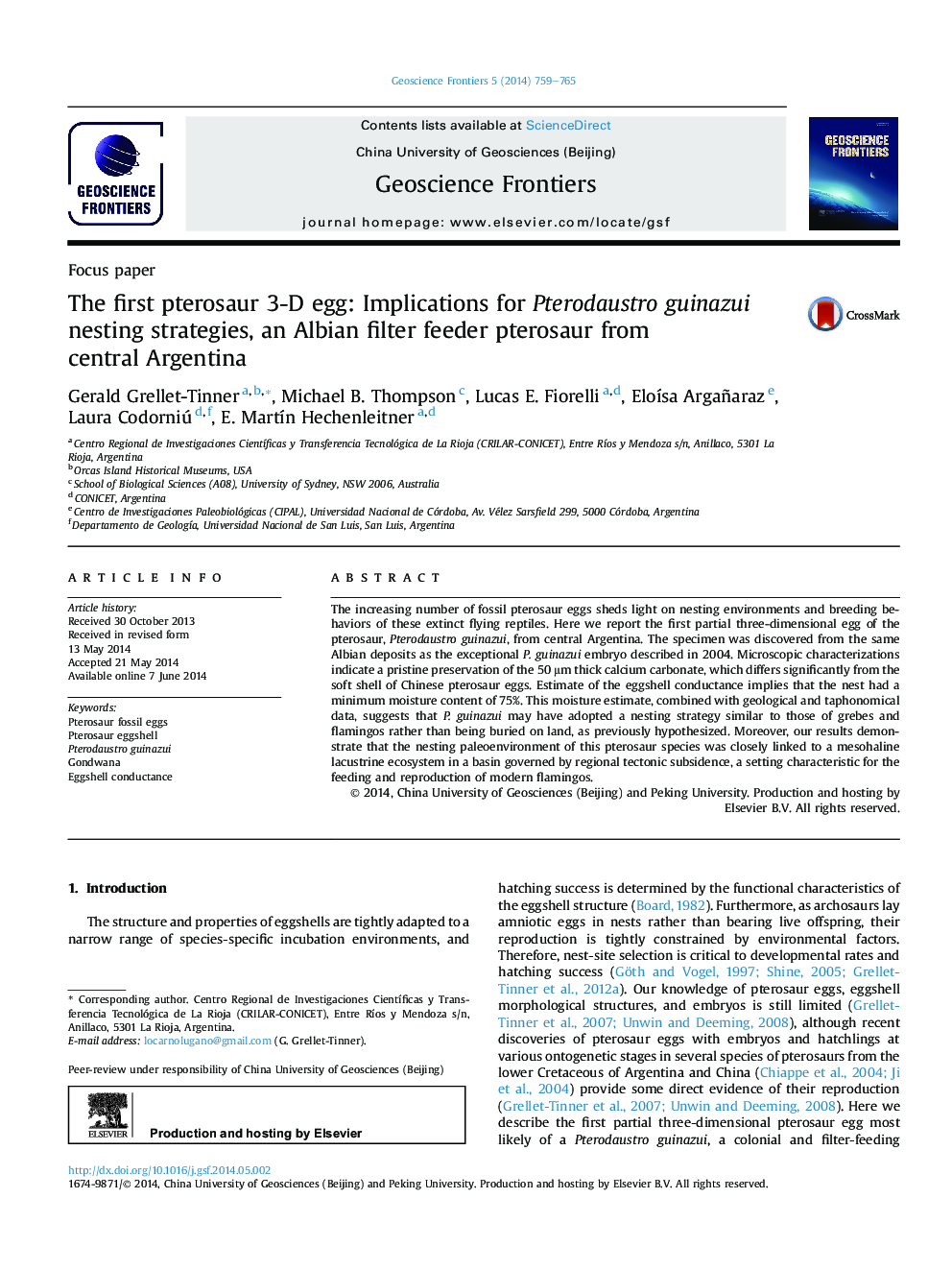| Article ID | Journal | Published Year | Pages | File Type |
|---|---|---|---|---|
| 4681686 | Geoscience Frontiers | 2014 | 7 Pages |
•We report the first partial 3D egg of Pterodaustro guinazui, from central Argentina.•Microscopic characterizations indicate a pristine preservation of the eggshells.•P. guinazui may have used a nesting strategy similar to those of grebes and flamingos.
The increasing number of fossil pterosaur eggs sheds light on nesting environments and breeding behaviors of these extinct flying reptiles. Here we report the first partial three-dimensional egg of the pterosaur, Pterodaustro guinazui, from central Argentina. The specimen was discovered from the same Albian deposits as the exceptional P. guinazui embryo described in 2004. Microscopic characterizations indicate a pristine preservation of the 50 μm thick calcium carbonate, which differs significantly from the soft shell of Chinese pterosaur eggs. Estimate of the eggshell conductance implies that the nest had a minimum moisture content of 75%. This moisture estimate, combined with geological and taphonomical data, suggests that P. guinazui may have adopted a nesting strategy similar to those of grebes and flamingos rather than being buried on land, as previously hypothesized. Moreover, our results demonstrate that the nesting paleoenvironment of this pterosaur species was closely linked to a mesohaline lacustrine ecosystem in a basin governed by regional tectonic subsidence, a setting characteristic for the feeding and reproduction of modern flamingos.
Graphical abstractFigure optionsDownload full-size imageDownload as PowerPoint slide
